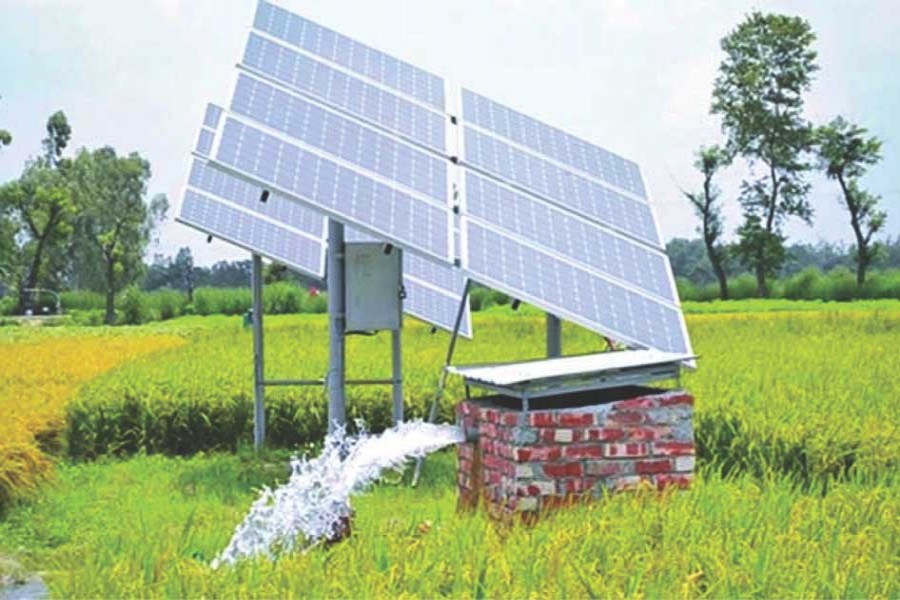As high price of imported Liquefied Natural Gas (LNG), fuel used for running many of the country's power plants, has forced the government to go for austerity in power use, the scramble for finding an alternative source of energy has understandably begun. Needless to say, the obvious choice is renewable energy. Notably, the government in its Renewable Energy (RE) Policy of 2008 set a target of meeting five per cent of the nation's demand for power from renewable sources by 2015 and 10 per cent by 2020. But the progress so far is negligible. Together, according to the power regulatory agency of the government, Power Cell, the renewable sources currently produce around 948 megawatts (MW), which is over five per cent of the total power generated (at around 11,000 MW) in the country. This amount hardly meets even 2020's target that the government set in the RE policy earlier.
The good news is that the government has reportedly come up with a fresh plan of generating 1,000 megawatts (MW) of electricity from a recently undertaken fast-track project. The Bangladesh Power Development Board (BPDB) is learnt to have started selecting appropriate locations to install solar panels for the purpose. To this end, an arrangement has also reportedly been made with independent power producers (IPPs).
As part of this plan, the government, as reported, is going to provide land to the interested parties to install solar power plants. But the biggest barrier to this plan will be the acute shortage of land in the country. Worse yet, land here is also very fragmented. This would come in the way of procuring an unfragmented piece of land even for setting up, say, a 50 MW photovoltaic (PV) solar park without encroaching on an agricultural land. To make matters worse, the existing government restriction on using agricultural land for solar projects is yet another obstacle to the plan. So, the government will be required to formulate a well-thought-out policy to overcome this issue. According to an estimate, if only one per cent of the country's total agricultural land could be used for installing solar projects, solar power plants of 50,000 MW capacity could be set up in the country. From such facilities, power equivalent to 82,000 GWh (gigawatt hour) could be generated. In this connection, the authorities should also look for the right technology that would allow the use of land both for agriculture and solar power generation at the same time. Floating solar plant is yet another solution the government is learnt to be planning to introduce. Such option is definitely well-suited to Bangladesh as it has a myriad of rivers and water bodies.
While appreciating the urgency to switch to renewable energy in a big way, it would also be worthwhile to weigh up the options. Seeing that at present 52 per cent of the country's total power generation capacity of over 21,000 MW come from natural gas-based power plants and another 41 per cent from those that run on oil and coal, the enormity of the challenge before the policymakers is well understood. This calls for carrying out further exploration and exploitation of the country's domestic hydrocarbon reserves, both onshore and offshore. Regarding renewable energy, choices of the sources as well as the technologies have to be set right. The past instances of shifting priorities should be avoided at all costs.


